An important part of my role as a web communications strategist is to stay connected to other practitioners engaged in web communications, social media, web 2.0, etc – particularly in government, but of course there is always value in seeing what’s happening outside of government circles as well.
Below are some online and face-to-face communities and groups that I am connected with, and which I feel provide a great way to stay up-to-date with the latest developments in online communications.
GovLoop
 A facebook-type of online space and community dedicated to connecting government employees from around the world. GovLoop has hundreds (maybe thousands?) of different groups, forums, blogs, etc where participants can share best practices, ask questions, and connect with other like-minded people on issues of common interest. It’s easy to create your own profile, search for “friends” and connect with them, blog, join groups, etc. If you’re not on GovLoop already, I highly recommend joining!
A facebook-type of online space and community dedicated to connecting government employees from around the world. GovLoop has hundreds (maybe thousands?) of different groups, forums, blogs, etc where participants can share best practices, ask questions, and connect with other like-minded people on issues of common interest. It’s easy to create your own profile, search for “friends” and connect with them, blog, join groups, etc. If you’re not on GovLoop already, I highly recommend joining!
#W2P
 This is a less-formal but very beneficial local Ottawa community of government practitioners interested in Web 2.0 use in/for government. Organized by Doug Bastien using Twitter and TwitVite (ex: http://twtvite.com/BC-GA) this group meets regularly to discuss a variety of issues related to web 2.0/social media use in government. Focus tends to be on federal government, but there are many issues that apply at the local level. The W2P community has also organized an annual (free!) full-day networking event for the past two years. I attended the event this year, and it was on-par with conferences organized by ALI and the Conference Board – each of which cost > $1000 pp. Well worth connecting with #W2P on twitter and going out to their meetings and events.
This is a less-formal but very beneficial local Ottawa community of government practitioners interested in Web 2.0 use in/for government. Organized by Doug Bastien using Twitter and TwitVite (ex: http://twtvite.com/BC-GA) this group meets regularly to discuss a variety of issues related to web 2.0/social media use in government. Focus tends to be on federal government, but there are many issues that apply at the local level. The W2P community has also organized an annual (free!) full-day networking event for the past two years. I attended the event this year, and it was on-par with conferences organized by ALI and the Conference Board – each of which cost > $1000 pp. Well worth connecting with #W2P on twitter and going out to their meetings and events.
CPS Renewal / Nick Charney

Ok so this isn’t a community, but rather a very active “connector” in social media for government, and definitely someone to connect with! Follow Nick on Twitter, and read Nick’s blog to stay in the loop on the latest trends and happenings (particularly in Ottawa) around web 2.0/social media and government, and government transformation.
Third Tuesday Ottawa
 While not focused specifically on government, the Third Tuesday Ottawa Meetups are about bringing together people in a F2F venue from Ottawa to discuss communications and marketing. Many of the speakers and topics in the past have focused on social media use and web 2.0, and have been presented by government employees. Worth joining the group and keeping an eye out for topics of interest.
While not focused specifically on government, the Third Tuesday Ottawa Meetups are about bringing together people in a F2F venue from Ottawa to discuss communications and marketing. Many of the speakers and topics in the past have focused on social media use and web 2.0, and have been presented by government employees. Worth joining the group and keeping an eye out for topics of interest.
Social Media Breakfast Ottawa
 With a specific focus on social media, these events are a great way to meet other local people in a F2F venue interested in social media. Not focused specifically on government, these events are typically an interesting way to learn and share about novel uses of social media tools and approaches. They have in the past taken place at Gowlings on Elgin Street right across from City Hall – conveniently located to drop by before work (usually from 7:30-9am)
With a specific focus on social media, these events are a great way to meet other local people in a F2F venue interested in social media. Not focused specifically on government, these events are typically an interesting way to learn and share about novel uses of social media tools and approaches. They have in the past taken place at Gowlings on Elgin Street right across from City Hall – conveniently located to drop by before work (usually from 7:30-9am)
Girl Geek Dinner Ottawa
 Monthly F2F events aimed to make technology accessible and interesting to all age groups and all people, particularly women. The dinners are always held in pubs, bars or restaurants and there is usually a speaker (or several) who talk for a short while on a chosen subject for the evening. I’ve never been to one of their events, but have heard great things about them!
Monthly F2F events aimed to make technology accessible and interesting to all age groups and all people, particularly women. The dinners are always held in pubs, bars or restaurants and there is usually a speaker (or several) who talk for a short while on a chosen subject for the evening. I’ve never been to one of their events, but have heard great things about them!
http://girlgeekdinnersottawa.com/
I’m sure I’ve missed lots of other great communities, groups, networks worth mentioning – please share your examples of local Ottawa F2F and online groups.

 Let’s start with the concept… a community is a sociological construct or model which means different things to different people, but at it’s core involves a group of people with identifyable commonalities. Traditionally tied by geographic proximity, in the modern digital era the meaning of community has evolved and changed radically as the degree of virtual interconnectness has increased.
Let’s start with the concept… a community is a sociological construct or model which means different things to different people, but at it’s core involves a group of people with identifyable commonalities. Traditionally tied by geographic proximity, in the modern digital era the meaning of community has evolved and changed radically as the degree of virtual interconnectness has increased.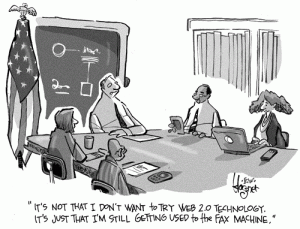 Despite the growing adoption rates of social media around the world, many organizations are still reticent, and fail to see the value of it. Governments in particular are struggling with the potential benefit of participating in social media in contrast to the potential for employee abuse. There are many examples of
Despite the growing adoption rates of social media around the world, many organizations are still reticent, and fail to see the value of it. Governments in particular are struggling with the potential benefit of participating in social media in contrast to the potential for employee abuse. There are many examples of 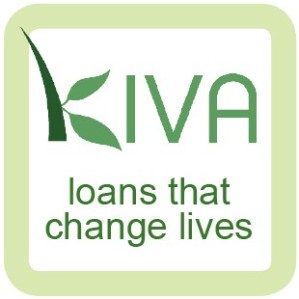

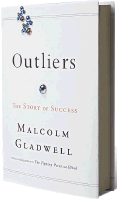 The book club was also inspiration for me to read a new book, the choice of the month being “Outliers” by Malcolm Gladwell. Having read “Tipping Point” (and lovin it!), I was pretty excited about Outliers. In case you haven’t read it already, it’s about different conditions that come together to propel people to excellence in life – examples including Bill Gates journey to world IT domination, which was not just hard work (although the 10,000+ hours of computer time helped!), but also a series of “lucky” circumstances including the time period he was born, access to computer labs when he was young, and a series of opportunities that helped foster his skills.
The book club was also inspiration for me to read a new book, the choice of the month being “Outliers” by Malcolm Gladwell. Having read “Tipping Point” (and lovin it!), I was pretty excited about Outliers. In case you haven’t read it already, it’s about different conditions that come together to propel people to excellence in life – examples including Bill Gates journey to world IT domination, which was not just hard work (although the 10,000+ hours of computer time helped!), but also a series of “lucky” circumstances including the time period he was born, access to computer labs when he was young, and a series of opportunities that helped foster his skills. The tool is an invaluable way to collaborate as a team, share quick updates, relevant links and information nuggets, without relying on email. Yammer can be used to quickly collect a list of useful reference materials; share notices of events; share relevant website links; share short industry-relevant news updates; and many other short pieces of information, opinion and knowledge that are relevant.
The tool is an invaluable way to collaborate as a team, share quick updates, relevant links and information nuggets, without relying on email. Yammer can be used to quickly collect a list of useful reference materials; share notices of events; share relevant website links; share short industry-relevant news updates; and many other short pieces of information, opinion and knowledge that are relevant.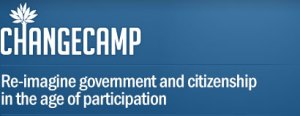 I had the pleasure of attending
I had the pleasure of attending 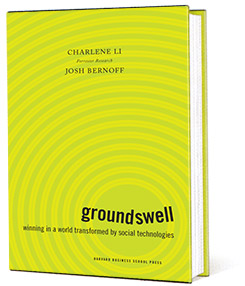 “Groundswell: Winning in a World Transformed by Social Technologies” by Charlene Li and Josh Bernoff (Forrester Research) is a great read for anyone interested in social media; or in general how to transform an organization to tap into new ways of collaborating.
“Groundswell: Winning in a World Transformed by Social Technologies” by Charlene Li and Josh Bernoff (Forrester Research) is a great read for anyone interested in social media; or in general how to transform an organization to tap into new ways of collaborating.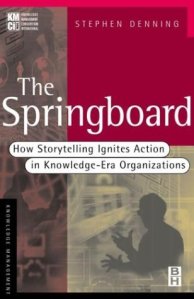 A few years ago I attended a workshop in Washington D.C. led by Steve Denning, formerly of the World Bank, on
A few years ago I attended a workshop in Washington D.C. led by Steve Denning, formerly of the World Bank, on